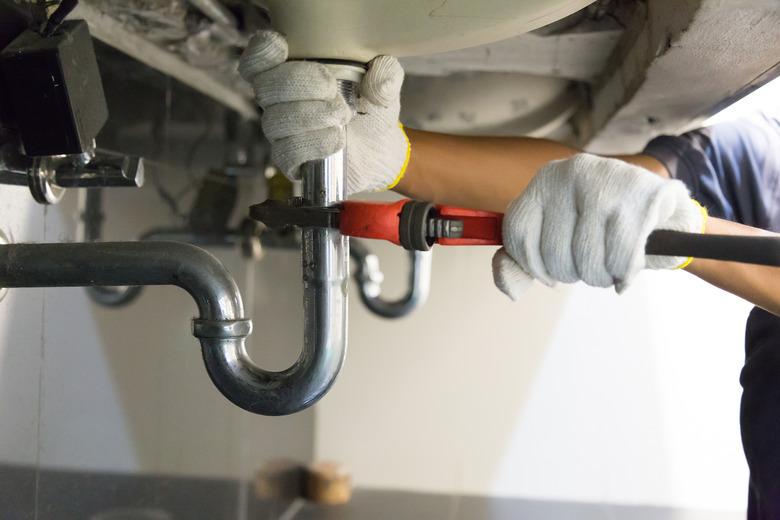How To Do Basic Bathroom Rough-In Plumbing
Learning how to do basic bathroom rough-in plumbing can come in handy if you're getting ready to add a bathroom to your home. Bathroom plumbing consists of fresh water lines, and drain and sewer elements with toilets, sinks, tubs and showers all draining into the same sewer main, with different feeds. They are all fed hot and cold water through pipes that branch off in several directions toward each fixture in a bathroom.
Rough-in plumbing involves bringing drain lines to the future bathroom and preparing them for individual connections that will occur when each fixture is installed. The process of doing basic bathroom rough-in plumbing requires some plumbing skills and a few specialized tools. The rough-in plumbing also must meet building codes.
1. Map Rough-In Plumbing Layout
Make a map of your rough-in plumbing layout for the bathroom. Locate the nearest main drain stack and chart the path the pipes will need to take to reach the bathroom, as well as the locations where they will reside once there. Factor in the location of your toilet, sink and shower or bathtub. Use your pencil and paper to draw the room and the array of pipes as well as the sizes required for each branch and ending.
2. Install T-Connector to Sewer Stack
Install a T-connector to the main sewer stack. This branch of the drain pipe will allow your toilet, sink and shower or tub to drain wastewater out of the bathroom and into the sewer main. Use an extra-large pipe cutter to open the stack, and insert a 3-inch PVC T-connector in the space, below the floor level of the bathroom so that all the drains will run downhill toward it. Use PVC cement according to the manufacturer's instructions to fit the pipe in place.
3. Run PVC Pipe
Run a length of 3-inch PVC pipe to the toilet drain location, then use a 90-degree angle to make the turn upward to a level just below the bathroom floor. Connect each length of pipe with double female adapters and PVC pipe cement. Use another 90-degree elbow to turn the pipe horizontal again, then use a splitter to turn your single pipe into two.
4. Connect to Sink Plumbing
Install a length of 3-inch pipe into one open end of the splitter, and install a 3-inch to 2-inch adapter into the other. Run a length of 2-inch pipe to your sink location and use a 90-degree angle to turn it upward. Install a last length of 2-inch pipe to a point about 18 inches above the bathroom floor. This will serve as your sink drain.
5. Connect Toilet Plumbing
Split your remaining 3-inch pipe into two lengths of 3-inch pipe. Use a 90-degree elbow to turn the pipe upward at the toilet installation location, and install a toilet flange on the top side of the flooring surface. The drain is ready for a toilet to be installed.
6. Connect Shower and Tub Plumbing
Run the last length of 3-inch pipe to the shower and tub drain location and use a 90-degree elbow to turn it upward. Use a length of 3-inch pipe to bring it to the level of the floor, where it will serve as your shower and tub drain.
